Switching to new software can be a source of tremendous stress for your employees. Learn how to address their anxieties in this post.
After months of deliberation and endless meetings, you’ve finally settled on a new piece of software. You’re excited to start afresh and can’t wait to see your team performing at its productive best.
The excitement, however, soon turns to anxiety. Your team flat-out refuses to use the new software. They know it might make them more productive, but they’re too reluctant to leave the familiarity of their older tools.
The end result? Stress, strife, and a sharp drop in productivity.
This is the reality of any software implementation in companies across the world. Employees, once accustomed to a way of working, are often unwilling to move to new tools.
The problem is particularly acute when dealing with mission-critical tools, such as project management software.
How do you deal with this problem? Are there any steps you can take to make the transition process smoother? What kind of time and money should you invest in training and support?
I’ll answer all these questions and more in this detailed guide.
Why Switching to New Software is Stressful
Change, of any kind, is stressful.
When that change affects something fundamental - how we work, where we live, who we hang out with - the resulting stress can be debilitating.
In psychology, the ability to withstand change is termed resilience. A host of factors - genetic as well as environmental - affect an individual’s resilience to change. This is why you find that some employees sail through big changes where others fall apart.
But in the workplace, what matters more than this innate resilience is the kind of change your employees have to deal with. Changes that affect a small portion of someone’s work - their email workflow or reporting tool - are relatively easy to overcome.
Changes that fundamentally alter how an individual approaches work, however, can result in significant stress.
A study published in the Journal of Business and Psychology found that:
“Change is more likely to lead to stress when the change has consequences for matters that are central to employees’ sense of self.”
People tend to tie their sense of self to their work and, by proxy, the tools they use to get their work done. A designer, thus, is expected to be a “Photoshop expert”, and a carpenter is expected to know their way around hammers and nails.
When you change these core identity-marking tools, you create a deep sense of crisis and stress. A designer who is asked to learn an entirely new software other than Photoshop might start wondering: can I really call myself a designer if I don’t know how to use design software?
For businesses, the lesson is clear: it’s okay to move fast and break things when changing minor tools.
But when you’re changing complex, identity-marking tools such as design or project management software, tread very carefully.
Addressing the Root Causes of Change-Related Stress
If you’ve ever torn your hair out in frustration when dealing with any software, you’ve experienced “technostress”.
As you might have guessed, technostress is stress caused by technology. From agonizingly slow software to consistently grating notifications, poorly implemented technology has a way of making your life worse, not better.
Technostress is particularly compounded when users are thrust into new software without adequate direction. As the study I mentioned above says, new software changes are mediated by a “sense of uncertainty”.
That is, when new software is implemented, people are often uncertain about:
- The duration of the changeover period
- Support - how long they’ll have it and how they can access it in the future
- The quality and duration of training
- Whether the software has buy-in from all stakeholders and will be used in the long run
- The usability of the software itself
- Whether the software has all the features they’re used to
- Whether the software will help them replicate the workflows they’re used to
This is why McKinsey’s research shows that the most successful change implementations have an organization-wide commitment to the change. There is no uncertainty; everyone - especially senior stakeholders - are 100% onboard with the change.
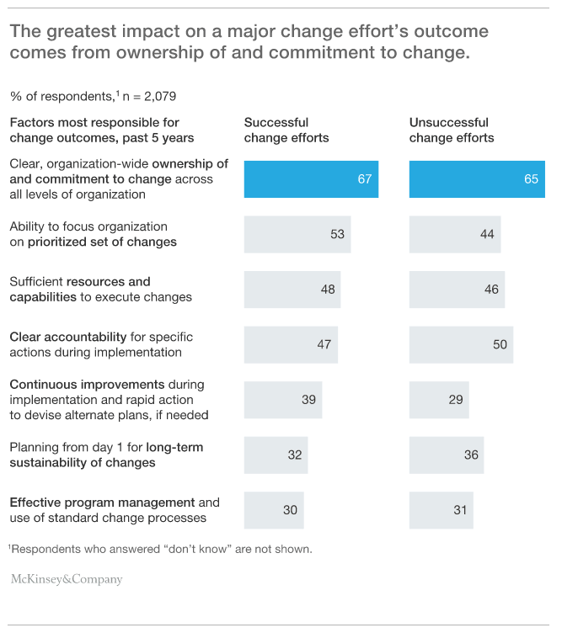
In other words, if you want your new software implementation to go stress-free, commit to it without hesitation.
On that note, let’s look at some concrete steps you can take to reduce stress when switching to new software.
How to Ease the Switch to New Software
An astonishing number of new software implementations fail. Even when they succeed, only a small minority realize the full benefits.
Research shows that just 8% of ERP projects realize >80% of their stated benefits. Nearly 50% of projects realize less than half of their benefits.
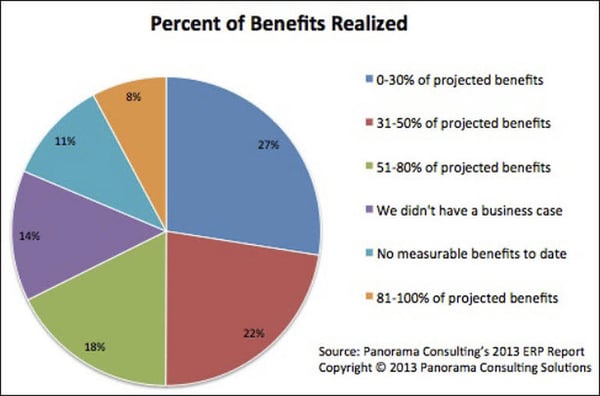
Such failures not only result in lost productivity and cost overruns, but they also add to your employees’ stress.
Below, I’ll share a few strategies to make this entire shift less stressful.
1. Give employees a sense of control
The switch to new software is often accompanied by a sense of losing control. Employees who were accustomed to a particular work environment (the older software’s features and workflow) often feel that they are not in command when they shift to a new system.
This loss of control - real or imagined - can be a significant source of stress.
Mitigate this by giving employees a stake in the entire implementation cycle. You can do this by:
- Consulting employees directly in the software selection process
- Giving employees the right to reject or approve proposals based on their requirements
- Allowing employees the room to delay or hasten the switch
Which is to say, treat the implementation process as a democratic, grassroots-level exercise, not a top-down diktat. Making employees equal stakeholders in the shift will go a long way to balm their control-related anxieties.
Another way to cede control back to employees is to appoint leaders from their ranks. These leaders can be power users who help the rest of the team adopt the new system.
Workamajig, for instance, has “super users” from each department. These super users not only build consensus across the departments but also voice their concerns and pass on customization requests.
This makes employees feel that they have a stake in the new software and the power to effect change, if necessary.
2. Choose software with ample support
Support - or the lack thereof - can be a tremendous source of stress when it comes to choosing new software. Employees rightfully feel anxious when they’re unsure of the amount, quality, and kind of support they’ll receive, both through official and unofficial channels.
Calm these fears by 1) choosing software that prioritizes support, and 2) making sure that employees know about it.
For #1, it’s important to consider not just the quality of support, but also its breadth. Support usage patterns vary from user-to-user and query-to-query. A software that offers only email support can be a source of anxiety for users who prefer phone support to resolve urgent queries.
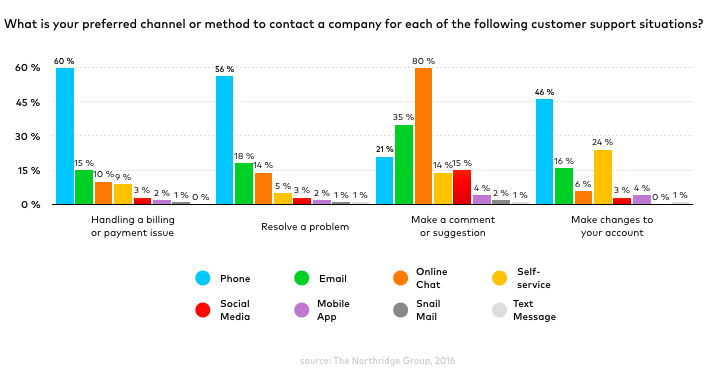
Preferred support channels vary based on the type of query
Also, consider the ease of accessing different support channels. Ask:
- Does the software have a dedicated support help desk with an easy-to-access URL?
- Are the support phone numbers easy to find?
- Is it easy to find the right person in the right department to find help?
- Does the support channel connect you to a real human or do you have to deal with automated bots to find help?
- Is phone support free or paid? If it is paid, are the rates well-known?
- Is there priority support for dealing with emergencies?
For instance, Workamajig has a dedicated support URL with training and documentation for all of Workamajig's features. There is also a dedicated page with detailed profiles of all the support staff. This reassures end-users that their support queries will be handled by real, experienced people, not bots.
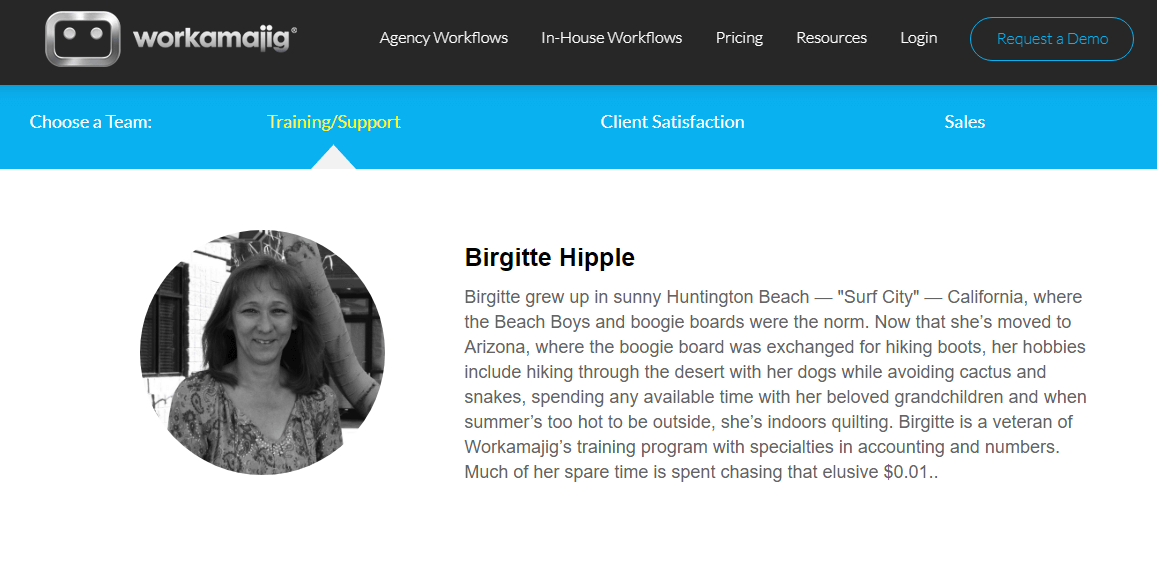
3. Offer ample training
Easy access to support can go a long way in reassuring anxious employees, but it still leaves the question of actually learning the new software. Employees not only have to unlearn the old system, but also learn new workflows - a massive source of stress.
There are two issues to address here:
- Access to live professional training, either in-person or over video
- Access to on-demand training and help through courses, documentation, and communities
Essentially, the software has to cater to different learning styles. Some will prefer live training with a certified professional. Others will prefer a more hands-on, learn-as-you-go approach through courses and documentation.
Choose software that can accommodate both these learning styles equally easily. It should have live training sessions to help teams get up to speed. And it should back this up with ample documentation to help users get the most out of the system.
For example, Workamajig offers a minimum of 10 hours of training to every new agency, regardless of its size (larger companies with more users get more hours). There are no hard constraints on training; if users need it, they access a few extra hours of training easily.
At the same time, users have access to ample documentation through the support site, this blog, and the extensive resources library.
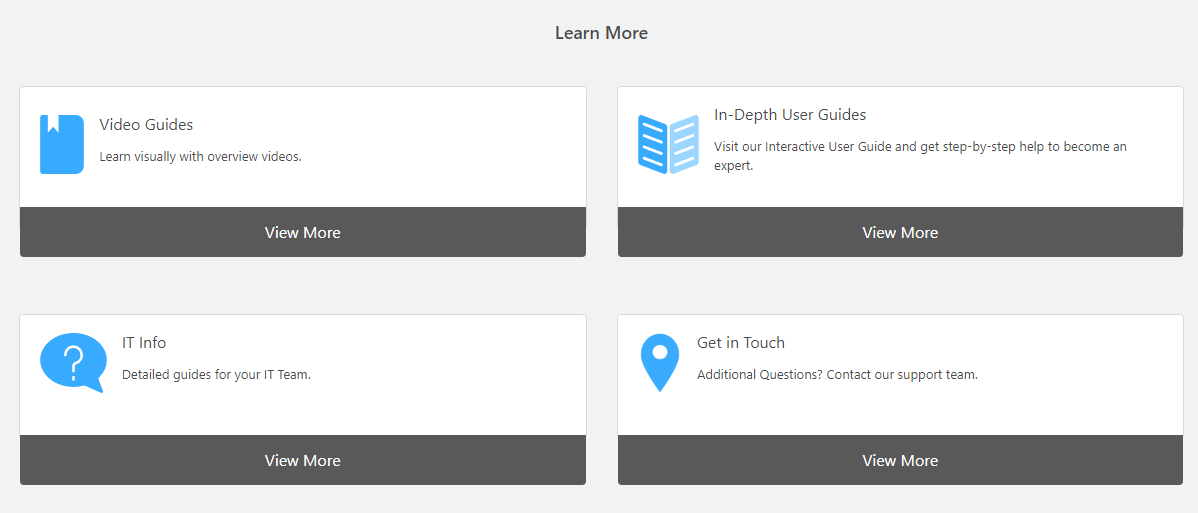
This ensures that users have access to the kind of training they want, when they want it.
4. Get complete commitment from senior executives
Would you really bother to learn an entirely new tool if you weren’t sure that you were going to use it six months later?
That’s the dilemma a lot of employees face when there is no clear organizational buy-in for new software. Instead of learning the new tool, they hesitate and look for signs and rumors. Will the new software be continued? Or will the senior execs go back to the older, proven system?
This situation often arises when there is no clear agreement among senior executives. One exec might push through a new implementation, but if there is no consensus, the new tool might be abandoned in favor of the older system.
Fix this problem by:
- Building consensus among all stakeholders - including the employees - before starting any implementation process.
- Practicing clear top-down communication so employees clearly know where the organization stands on the new software.
Remember that your rank-and-file looks to senior leaders to figure out what to prioritize, what to ignore. If they find that some leaders openly prefer using the older system, it can give employees the impression that the new software isn’t a top priority.
Being clear and forthright in your implementation strategy can go a long way in addressing these concerns.
5. Assure employees about the long-term value of the software
The fundamental question employees ask when they’re asked to switch to new software is why? Why should they bother to learn a new system when the older one was doing perfectly fine?
The most obvious answer is that it will help them be more productive. But that’s only partially true. Higher employee productivity is better for you as a business, but not necessarily the best thing for an employee.
A much better answer is that the new software will offer “long-term value” to their career.
This long-term value can be in the form of:
- Acquiring new, in-demand skills that boost their career prospects
- Learning industry-standard tools that help them find jobs in the future
This answer appeals to something they care about - their career and skills. It’s a much more powerful motivator than simple productivity gains.
For example, if you’re moving from CorelDraw to Adobe Illustrator, you can tell employees that learning this new tool will help them be more employable in the future. Illustrator, after all, is the industry standard in vector design.
Similarly, employees will be more eager to switch to project management software like Workamajig since it is an industry standard among agencies. In fact, some jobs even ask for Workamajig experience.
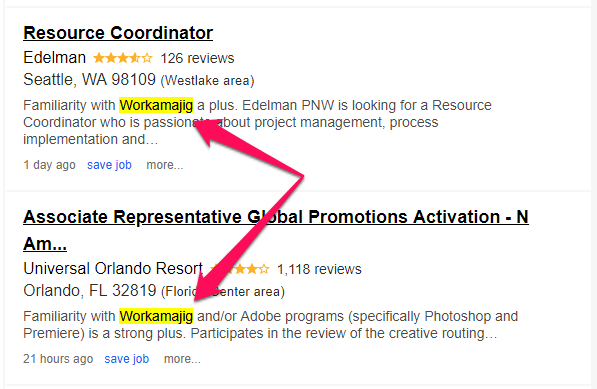
This appeal to their self-interest can often ride out any anxieties your employees might have about switching to new software.
Over to You
Switching to new software can be an anxiety-ridden, stress-inducing experience. Employees wonder whether the switch will be worth their time and effort. They also wonder if they’re actually learning industry-standard tools and best practices.
Assuage these fears by following the strategies I’ve shared above. Use them and you’ll find that the switch will be smoother than you can even imagine
To experience a smooth transition to new software, try out Workamajig today. You’ll be surprised by how easy it is to move your agency to a new management system.

